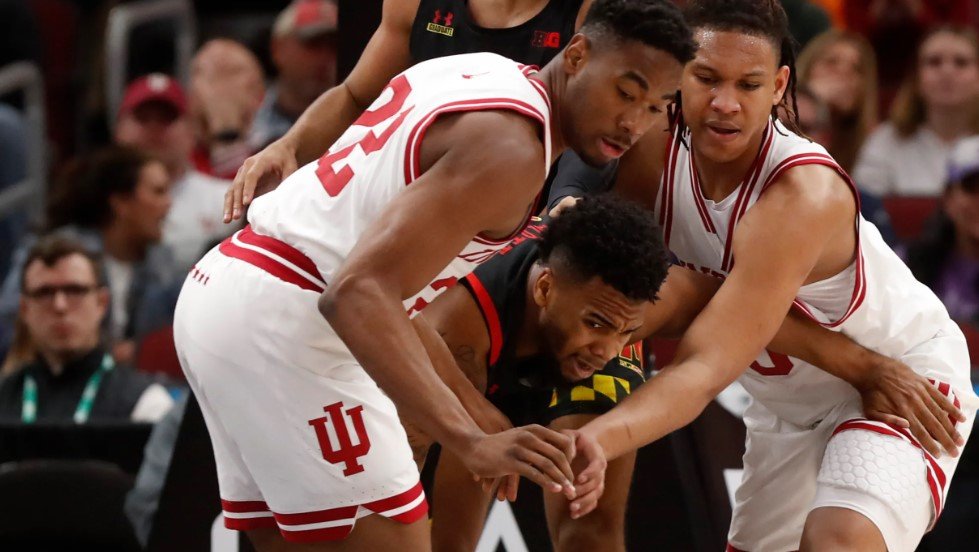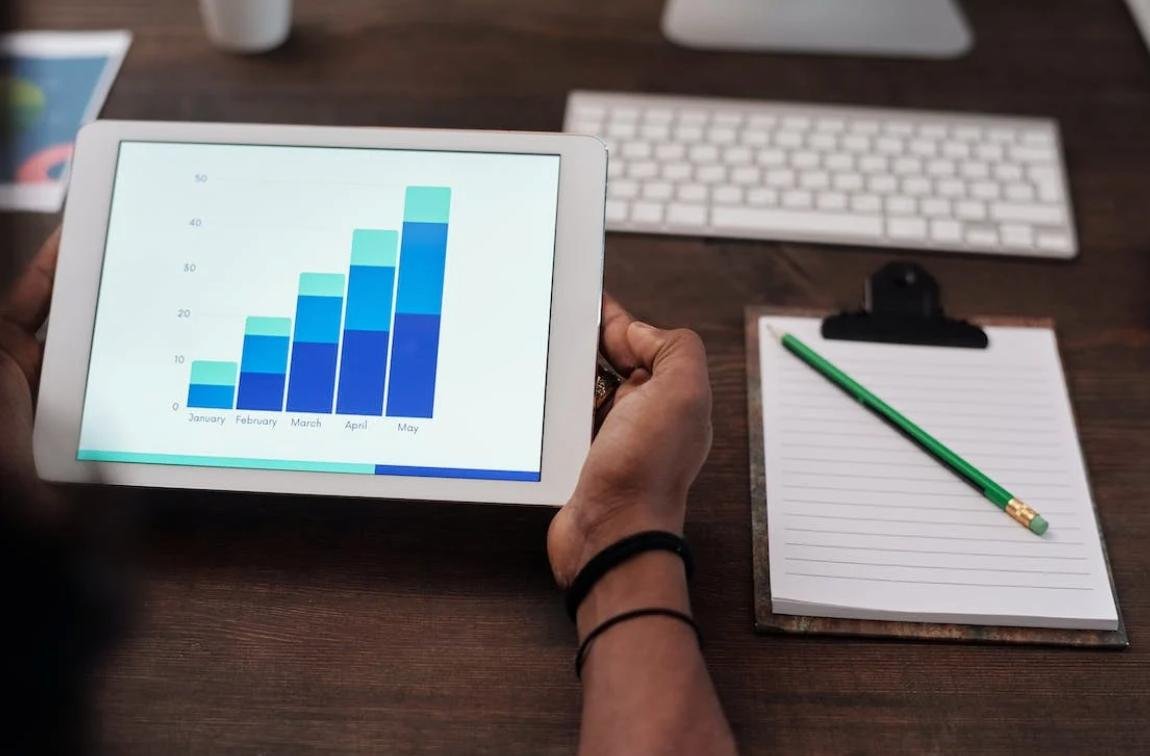Having a well-trafficked website is essential for any business hoping to succeed in the digital age. It allows you to reach new customers, build a positive brand image, and increase sales. For this reason, “Maximizing Website Traffic: Proven Strategies for Success” is an incredibly helpful guide for any business hoping to increase the amount of visitors to their website. In this article, readers will learn strategies for increasing website traffic, including optimizing website content for search engine optimization, using targeted advertising, and leveraging social media. Additionally, readers will also learn the importance of monitoring website performance and utilizing analytics to track website traffic. With these proven strategies, businesses will be able to maximize website traffic and ensure that their website is seen by the right people.
Understanding Your Target Audience
Understanding your target audience is an important part of any successful marketing strategy. Knowing who your audience is and what motivates them can help you create content that resonates and drives conversions. By defining your target audience, you can more effectively reach the right people with the right message and drive more sales.

Importance of Defining Your Target Audience
Having a clear understanding of your target audience is essential for effective marketing. It helps you create content that speaks to the right people, and it also helps you allocate your resources more effectively. Knowing who your audience is can help you focus your efforts on the right channels and create more effective campaigns. It can also help you create better-targeted ads and more engaging content.
Ways to Identify Your Ideal Customer
There are several ways to identify your target audience. You can start by looking at your existing customers and analyzing their demographics, interests, and behaviors. This can help you get a better understanding of who your ideal customer is and what motivates them. You can also use analytics tools to see which channels are driving the most traffic and conversions. This can help you identify which channels are most effective for reaching your target audience.
When it comes to understanding your target audience, there are two words you will often hear: “customer persona” and “buyer journey”. A customer persona is an imaginary representation of your ideal customer, based on data and research. This can help you create more effective campaigns, as it gives you a better understanding of who your audience is and what they need. A buyer journey is the path a customer takes from the moment they become aware of your brand to the moment they make a purchase. Knowing the stages of this journey can help you create more effective content and campaigns.
Keyword Research and Optimization
Importance of Keyword Research
Keyword research is an essential part of any successful digital marketing campaign. It allows marketers to identify the terms and phrases potential customers are using to search for products and services, and then optimize their content to target those keywords. This ensures that content is seen by the right people, at the right time, and increases the chances of converting a website visitor into a customer.
Best Practices for Conducting Keyword Research
When conducting keyword research, it is important to ensure that the keywords being targeted are relevant to the content or product being promoted. Additionally, marketers should make sure to use a variety of different keyword types, including long-tail keywords, LSI keywords, and branded keywords. Long-tail keywords are longer phrases that are more specific than shorter, more generic terms. LSI keywords are related terms that are often used in conjunction with the primary keyword. Branded keywords include the company or brand’s name in the search query. Using a variety of keyword types helps to ensure that content is seen by the right people and helps to increase the chances of success.

Tips for Optimizing Content with Targeted Keywords
Once the right keywords have been identified, it is important to optimize the content to target those keywords. This can be done by using the keywords in the title, headings, and body of the content. Additionally, marketers should use the keywords in the meta tags and URLs, as well as in image alt tags and social media posts. Optimizing content for targeted keywords is key to increasing visibility and driving more traffic to a website.
On-Page Optimization Techniques
Explanation of On-Page Optimization
On-page optimization is the process of optimizing individual web pages in order to improve their rankings in search engine results. This is done by optimizing the various elements of the page, such as content structure, headlines, and meta descriptions, so that they are more likely to be found by search engines. This helps to increase a page’s visibility in the search engine results and improve its chances of being clicked on.
Best Practices for On-Page Optimization
The most important factor for on-page optimization is ensuring that the content on a page is relevant to the keywords that you are targeting. It is also important to use keyword-rich titles and meta descriptions, as this helps to make your pages more visible in the search engine results. Additionally, it is important to make sure that the content on the page is well-structured and easy to read, as this will make it more likely to be clicked on by users.
Tips for Optimizing Your Content Structure, Headlines, and Meta Descriptions
When optimizing content structure, it is important to use headings and subheadings to break up the content on the page into smaller sections. This makes it easier for both users and search engines to understand the content on the page. It is important to use keywords throughout the page, as this helps search engines to identify the content on the page.
When optimizing headlines and meta descriptions, it is important to use keywords that are relevant to the content on the page. Additionally, it is important to make sure that the headlines and meta descriptions are engaging and interesting, as this will help to draw users to click on the page in the search engine results. Finally, it is important to make sure that the headlines and meta descriptions are unique and contain relevant information, as this will help to make the page stand out from other results.

Content Creation Strategies
Content creation is an essential part of any digital marketing campaign, as it helps to engage customers, build relationships, generate leads, and improve brand awareness. High-quality content is the key to success in any digital marketing strategy, and there are a variety of best practices and tips for creating engaging and effective content.
Importance of Creating High-Quality Content:
High-quality content can help to build trust with customers, establish credibility, and increase conversions. Quality content should be well-written, informative, and provide valuable information. It should be optimized for search engines, have a clear purpose, and be easy to read.
Best Practices for Creating Engaging Content:
When creating content, it is important to keep in mind the target audience, create content that is relevant and interesting, and make sure it is optimized for mobile devices. Also content should be concise, consistent in style, and have an appropriate tone.
Tips for Creating Various Types of Content:
The type of content created should be based on the goals of the campaign and the target audience, and it should be properly optimized for search engines. Blog posts should be well-written and informative, while infographics should be visually appealing and easy to understand. Videos should be engaging, creative, and have a clear purpose.
Off-Page Optimization Techniques
Off-page optimization is an important part of any SEO strategy. It involves activities that are done outside of a website to increase the site’s visibility and presence in the search engine results pages (SERPs). Examples of these activities include link building and social media marketing.
Link Building
Link building is the process of creating external links to a website in order to improve its SERP ranking. This is done by creating relationships with other websites, which is often done through guest blogging and resource sharing. Link building is also done through content marketing, where a website produces content that is useful and relevant to other websites and encourages them to link to it.
Creating an Effective Link-Building Strategy
In order to create an effective link-building strategy, you should focus on creating quality links from relevant websites. You should also identify the most important keywords for your website, then target those keywords in your link-building efforts. Additionally, you should use natural language processing (NLP) terms such as “backlinks” and “social signals” to increase the relevancy of your link-building activities.
Read more: The Dark Side of SEO – Common Mistakes and How to Avoid Them
Social Media Marketing
Social media marketing is the process of using social media platforms to promote a website’s products and services. This includes creating and sharing content, engaging with customers, and building relationships with influencers. Social media marketing can also be used to build backlinks and increase the reach of a website. It is important to create content that is interesting and engaging, as well as to respond quickly and effectively to customer inquiries.

By utilizing off-page optimization techniques such as link building and social media marketing, you can increase the visibility of your website and gain an edge over your competitors. Link building should be done strategically, focusing on quality and relevance, while social media marketing should be done with the goal of creating engaging content and building relationships.
Leveraging Social Media
Explanation of how social media can help drive website traffic
Social media optimization (SMO) is a powerful tool for driving website traffic. By using social media platforms, you can reach out to potential customers, generate awareness of your brand, and increase website traffic. Through strategic content creation and sharing, you can engage with your target audience and enhance your online presence. This can result in increased website visits, a higher conversion rate, and better visibility for your website.
Best practices for using social media to promote your content and engage with your audience
The key to successful social media optimization is to create content that resonates with your target audience. Content should be tailored to the platform you are using, and should be optimized for each platform to maximize your reach. It is important to post content regularly and engage with your followers by responding to comments and questions in a timely manner. This will help to build strong relationships with your audience and encourage them to return to your website.
Tips for creating an effective social media marketing strategy
Creating an effective social media marketing strategy requires research and planning. It is important to identify the platforms that are most relevant to your target audience and to create a content strategy based on your goals. You should also track engagement metrics such as likes, comments, shares, and click-through rates to measure the success of your efforts. Finally, it is essential to stay up to date with the latest trends in social media and adjust your strategy accordingly.
Read more: Mobile Marketing – The Future of Digital Advertising
Analyzing and Measuring Traffic
Analyzing and measuring website traffic is essential for any business that wants to succeed online. Knowing who your visitors are, where they are coming from, and how they interact with your website is essential to making data-driven decisions and optimizing the user experience.
There are a number of tools available to track website traffic, user behavior, and conversions. Google Analytics is the most popular and comprehensive, but there are also other tools such as Hotjar and Mixpanel that can provide valuable insights. Depending on the size and scope of your website, you can choose the best tool for your particular needs.
Using analytics, you can make data-driven decisions to optimize your website to maximize conversion rates and ROI. This can include testing different page designs, adjusting color schemes, and analyzing user behavior. Additionally, you can use analytics to measure the success of your marketing campaigns and track the effectiveness of your SEO efforts. By understanding the metrics and trends, you can make decisions to maximize your website’s performance.
Conclusion
In Conclusion, website owners should focus on creating high-quality content, optimizing their website for search engines, and engaging in digital marketing. By creating quality content, optimizing for search engines, and engaging with digital marketing, website owners can increase their website traffic and reach their target audience. Website owners need to track their website’s performance, analyze their website’s data, and take proactive steps to improve their website’s performance.
Overall, website owners looking to maximize their website traffic should focus on creating quality content, optimizing for search engines, engaging with digital marketing, tracking their performance, analyzing their data, and taking proactive steps to improve their website’s performance. By following these strategies, they can ensure that they are reaching their target audience and increasing their website traffic.
FAQs – Maximizing Website Traffic
1. How can I maximize website traffic?
Answer: There are several proven strategies that can help you maximize website traffic. These include optimizing your website for search engines with SEO, creating content that is valuable and engaging to readers, utilizing social media to promote your content, and utilizing paid advertising campaigns.
2. What are some effective SEO strategies?
Answer: Effective SEO strategies include creating well-researched and keyword-rich content, optimizing titles and meta descriptions, using relevant and high-quality backlinks, utilizing structured data, and creating a well-structured website.
3. What is the best way to increase website traffic?
Answer: The best way to increase website traffic is to create content that is valuable to readers, promote it on social media, and utilize SEO and paid advertising campaigns.
4. What are the most important factors for driving website traffic?
Answer: The most important factors for driving website traffic are content quality, search engine optimization, social media promotion, and paid advertising campaigns.
5. How can I drive more organic traffic to my website?
Answer: To drive more organic traffic to your website, focus on creating content that is valuable to readers, optimizing your website for search engines, and utilizing high-quality backlinks.
6. How can I optimize my website for SEO?
Answer: To optimize your website for SEO, create content that is well-researched and keyword-rich, use structured data, optimize titles and meta descriptions, and create a well-structured website.
7. How do I create content that will increase website traffic?
Answer: Creating content that will increase website traffic requires creating content that is valuable to readers, optimizing titles and meta descriptions, and using relevant and high-quality backlinks.
8. How can I use social media to increase website traffic?
Answer: To use social media to increase website traffic, create content that is valuable to readers, promote it on various social media platforms, and engage with your followers.
9. What are the most effective paid advertising campaigns?
Answer: The most effective paid advertising campaigns are those that target a specific audience, use relevant keywords and visuals, and track performance metrics.
10. What metrics should I track to measure website traffic success?
Answer: To measure website traffic success, you should track metrics such as page views, bounce rate, time on page, conversion rate, and average session duration.


























